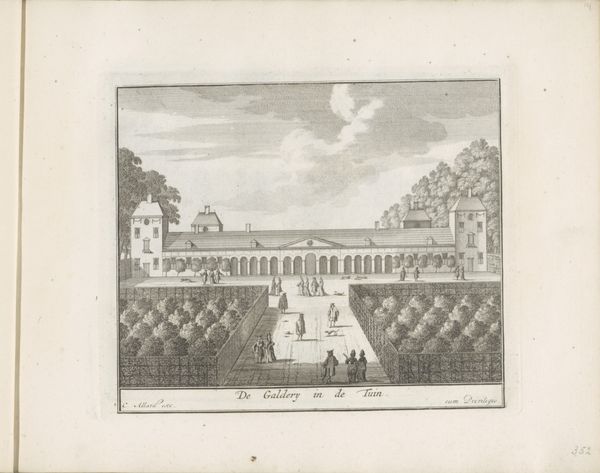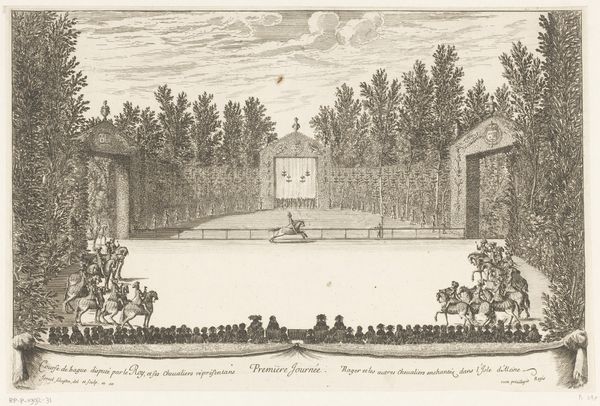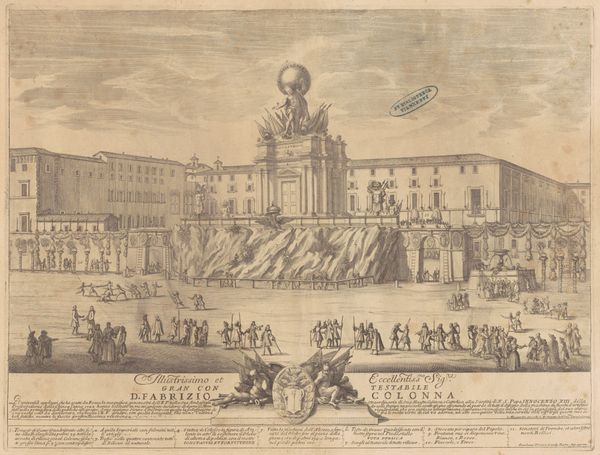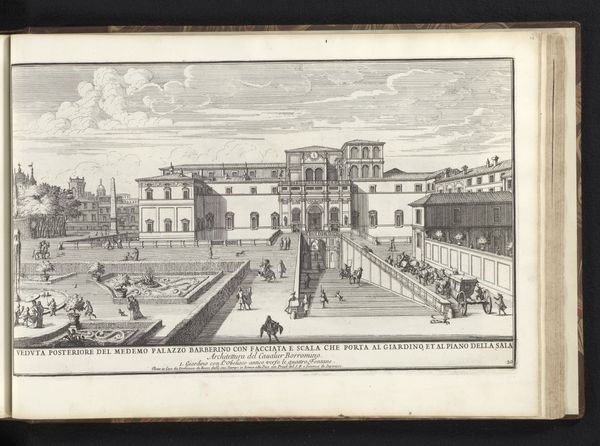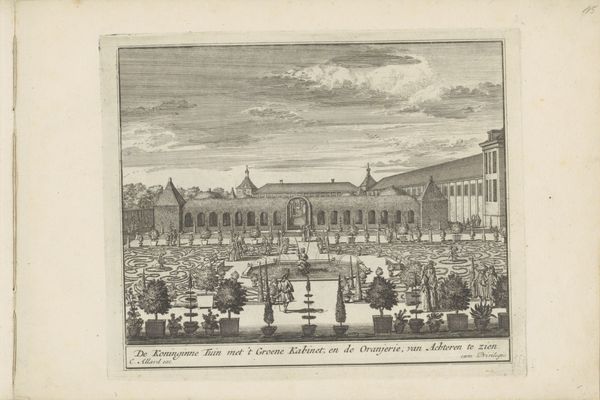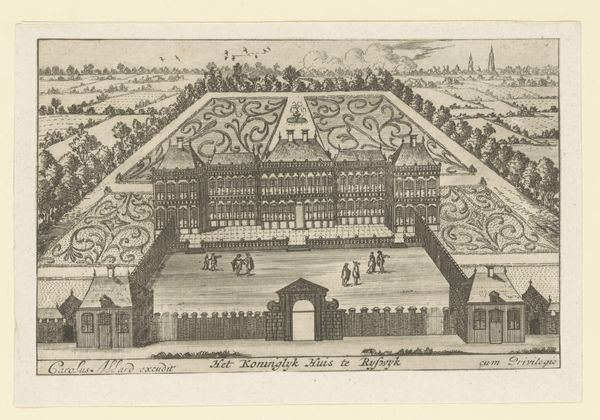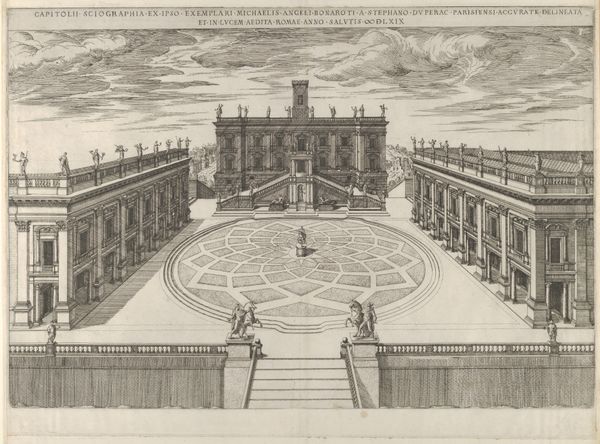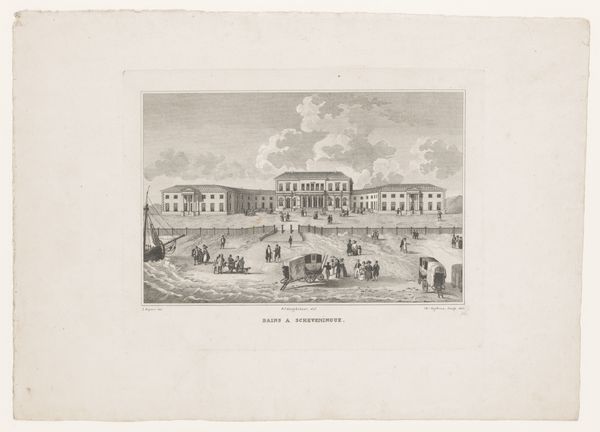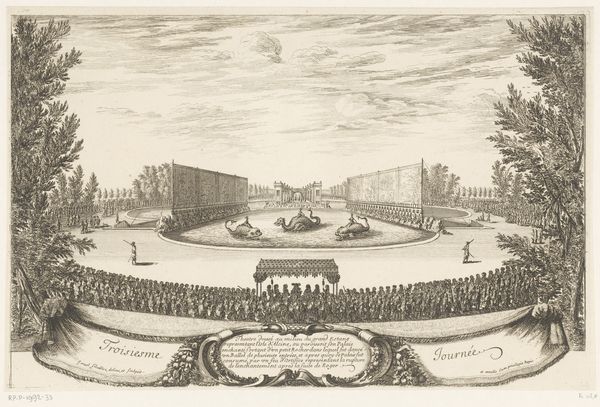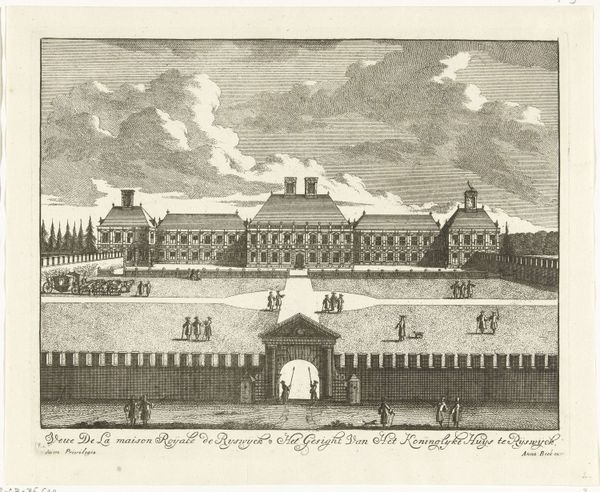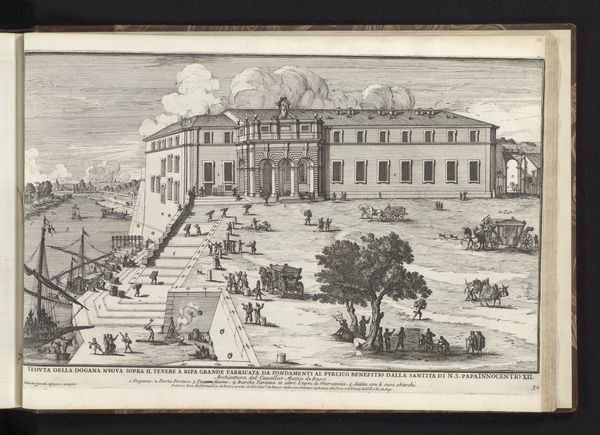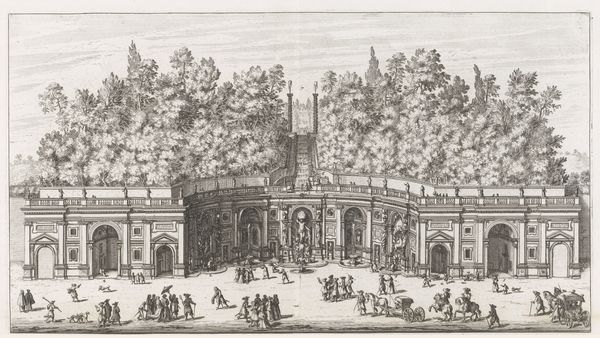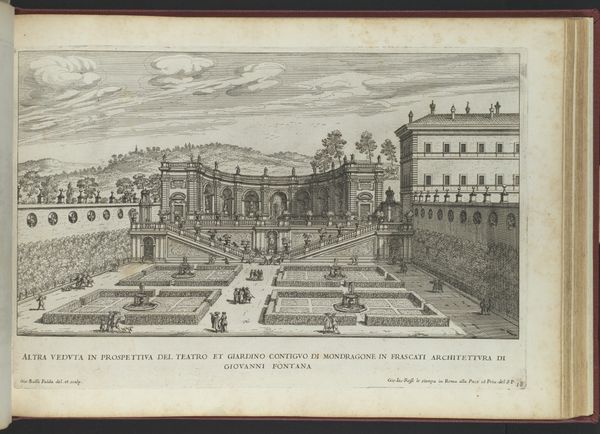
The villa at center flanked by four obelisks, a staircase to either side, a statue in a niche in center of staircases, various figures and dogs below, from 'Views of the villa at Pratolino' (Vues de la villa de Pratolino) 1648 - 1658
0:00
0:00
drawing, print, etching, architecture
#
architectural sketch
#
drawing
#
baroque
# print
#
pen sketch
#
etching
#
pencil sketch
#
landscape
#
cityscape
#
architecture
Dimensions: Sheet: 13 9/16 x 18 9/16 in. (34.5 x 47.1 cm) Plate: 10 1/16 x 14 15/16 in. (25.6 x 37.9 cm)
Copyright: Public Domain
Editor: This is "The Villa at Center Flanked by Four Obelisks, a Staircase to Either Side, a Statue in a Niche in Center of Staircases, various figures and dogs below, from 'Views of the villa at Pratolino'," a Baroque etching and print made between 1648 and 1658 by Stefano della Bella. There’s a beautiful symmetry and almost theatrical feel to this depiction of a grand villa. What historical contexts illuminate this print for you? Curator: This image presents Pratolino, a Medici villa, not just as architecture but as a staged display of power. Consider how garden design, architecture, and even the placement of figures within the scene, were employed to project a carefully crafted image of Medici authority. The print, as a reproducible medium, further disseminated that image to a wider audience. Editor: So the print itself becomes a tool of political communication? Curator: Precisely. And notice how the symmetrical layout, the elevated perspective, and the inclusion of classical elements—obelisks and statues—all contribute to an impression of cultivated grandeur. Consider what values the Medici are trying to associate themselves with through this landscape and its depiction. Is it simply wealth or something more complex? Editor: I see what you mean. It's not just a pretty picture; it's communicating status and projecting cultural capital. The very act of commissioning and circulating images like this was a political act. Curator: Indeed. Understanding the function of art within the political and social spheres is paramount. Think about how visual representation served as a tool for power during this time, and still does today. Editor: That's a fascinating perspective. I will never look at landscape prints the same way again. Thank you! Curator: And I hope to have helped illustrate how closely art and history intertwine, reflecting the society that creates and consumes them.
Comments
No comments
Be the first to comment and join the conversation on the ultimate creative platform.

